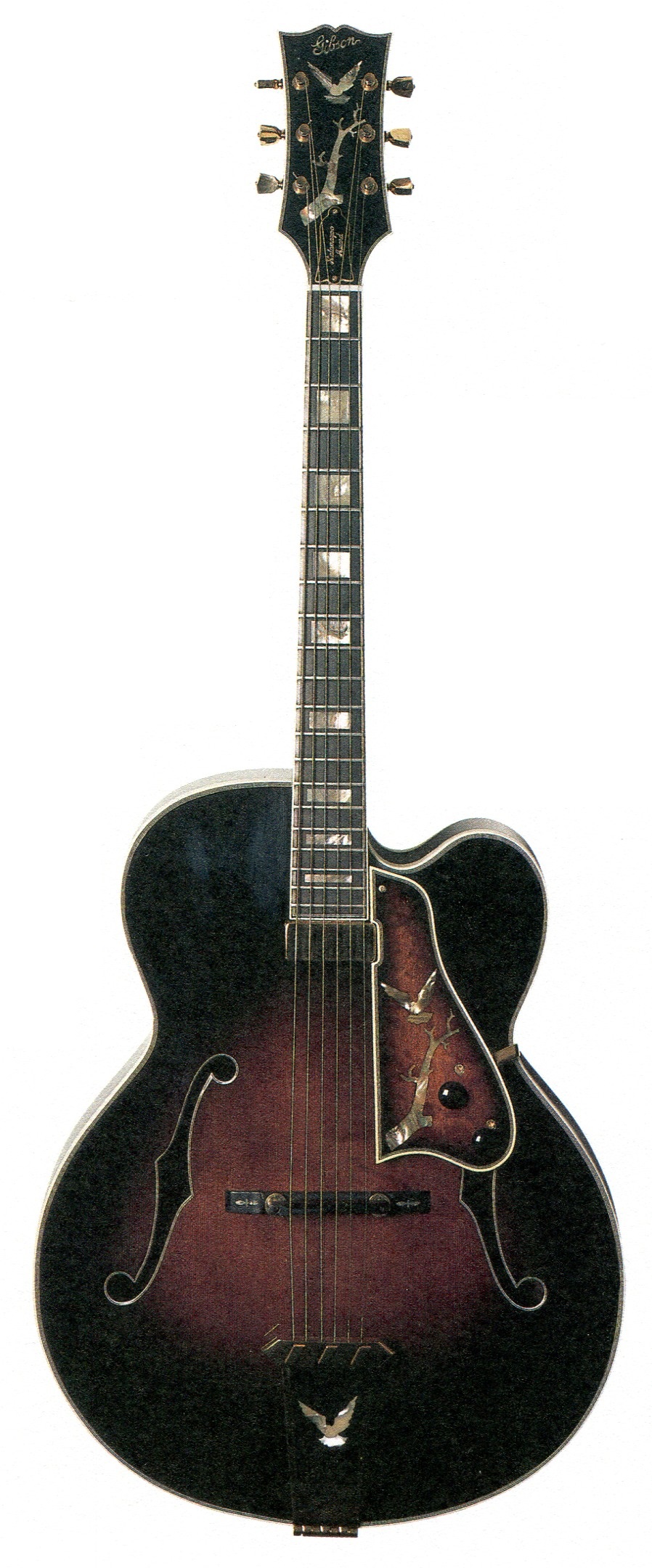Gibson Kalamazoo Award

Gibson opened a new facility in Nashville in 1974, intending to move solidbody electric production there. The craftsmen who made Gibson archtops – a style of guitar that Orville Gibson had invented in the 1890s – stayed in Kalamazoo, MI, and in 1978 they demonstrated their skills with an elaborately ornamented creation called the Kalamazoo Award.
The pickguard alone set the Kalamazoo Award apart from all previous Gibsons. Instead of celluloid, it was birdeye maple, inlaid with an abalone flying bird and branch. The figures were repeated on the peghead and tailpiece insert, and the large block fingerboard inlays were also abalone. The floating mini-humbucking pickup, with controls mounted in the pickguard, indicated that this guitar was designed to perform equally well as an acoustic or an electric.
Made in very limited numbers during a period when Gibson quality was falling fast, the Kalamazoo Award offered the guitar world a glimmer of reassurance that the tradition of fine, hand-crafted guitars was still alive and well at Gibson.
